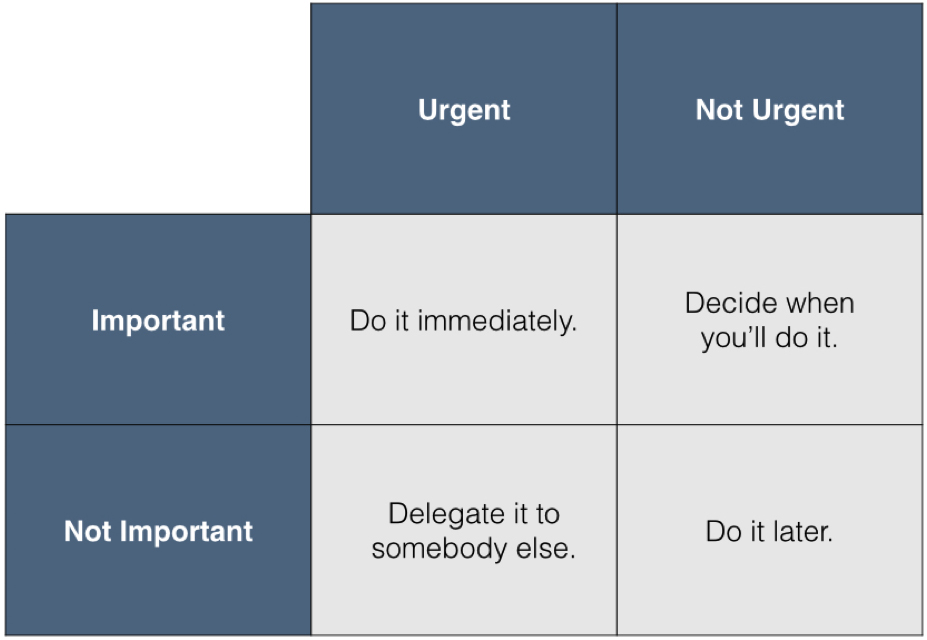The four-step guide to eliminating distractions
This is a guest post by Hamza Khan
Just because you’re at work doesn’t mean you’re getting work done. Edward Hallowell, author of Driven to Distraction at Work: How to Focus and Be More Productive, says that we spend 20 minutes out of every hour dealing with unplanned distractions. And that’s not all – we spend two hours each day regaining focus from all of these distractions, a number which adds up to more than an entire workday, every workweek. According to research, this lost time costs the U.S. economy $588 billion a year.
Your capacity to get things done depends on your ability to focus; you depend on sustaining a state of flow for optimal performance. Unfortunately, there’s no shortage of distractions in the workplace – incessant emails, last minute requests, instant messages, and all manners of notifications are competing for your time, energy and attention. The problem with distractions is that they rupture your focus right through your attention, energy, and ultimately, your time. This not only derails your workflow, it causes you to become unproductive (Sean Clark wrote about why a 15 minute side track actually costs an hour). Worse, it leaves you prone to errors and poor judgment.
To unlock the most productive version of yourself, and to ultimately benefit your organization, you need to be able to level up your ability to limit and altogether eliminate distractions. It’s challenging, but you’ll find that with a few simple changes to your work style, you’ll supercharge your productivity for the long term.
Here are four ways to manage distractions, and start getting things done:
Step 1: Distinguish between important and urgent
Focusing on urgent tasks will throw your workflow into a reactive state, making you frantic and defensive.
Are you spending all of your time in crisis mode? If you’re checking your email so often that it’s preventing you from getting any actual work done, then you’re conflating the urgent with the important. Start by rejecting the very premise of interruptions:
What is important is seldom urgent, and what is urgent is seldom important Dwight Eisenhower
Enter the Eisenhower Box, a simple decision-making tool:

Here are a few examples of how the categories combine, according to Drake Baer, co-author of Everything Connects: How to Transform and Lead in the Age of Creativity, Innovation, and Sustainability:
- Important and urgent: Attending to a crying baby, tackling a crisis at work, and mailing your rent check
- Important but not urgent: Saving for the future, getting enough exercise, sleeping seven to nine hours a night
- Not important but urgent: Booking a flight, answering a phone call
- Not important and not urgent: Watching “Game of Thrones,” checking Facebook, eating cookies
Focusing on urgent tasks will throw your workflow into a reactive state, making you frantic and defensive. Focusing on important tasks will give you the space to be calm and creative. Avoid unnecessarily expending energy and distracting yourself by confusing urgency with importance.
Step 2: Take the Zero Notification Challenge
Focus isn’t something that’s innate to certain individuals; it’s simply a function of limiting the number of options you give yourself for procrastinating.
Joel Gascoigne, CEO of Buffer, conducted an experiment in which he disabled all notifications on his phone. The results were telling:
- It is now completely up to me when I choose to check my email, Twitter, Facebook, etc. I have no excuse that a notification came in. If I check it too frequently and find myself procrastinating, it is only my fault: I went out of my way to go and look.
By eliminating notifications, you’re limiting the amount of urgent priorities competing for your attention. Doing so will allow you regain your focus on important priorities and shift your workflow from reactionary to proactive. Focus isn’t something that’s innate to certain individuals; it’s simply a function of limiting the number of options you give yourself for procrastinating.
Step 3: Just say “no”
Try saying “no” more often; you’ll find it’s not only freeing but essential to eliminating distractions. We often think saying no is somehow insulting . But by reluctantly saying yes, we grow to fear our calendars. Instead, articulate your needs, challenges, and deadlines. Remember: a respectful no is better than a half-hearted yes.
Here are some ways to structure a (respectful) no:
1) Acknowledge the importance of the request, or appreciate being considered:
- “I really want to help you, but…”
- “This sounds like a great project, however…”
- “Thanks for inviting me to this. Unfortunately…”
2) Explain why you’re saying no:
- “I’m up to my eyes in deadlines…”
- “This is really outside of my expertise…”
- “I’ve been in serious need of some “me” time lately…”
3) Suggest an alternative:
- “I could introduce you to…”
- “Could we perhaps try to do this another way?”
- “My friend Janakan is an awesome graphic designer. Here’s his email.”
Saying no — when done respectfully and in a structured manner— deflects distractions and ensures that (the right) projects are completed. Workflow is paralyzed when you are juggling things you wish you never committed to. Guard your time from things that don’t warrant your immediate attention or are counterproductive. Start saying yes to yourself by saying no others. Say no to happy hour, no to lunch meetings, no to round-table, etc. Just say “no.”
Step 4: Start somewhere (and don’t stop)
Staring up at big projects can be paralyzing. So rather than thinking about the most daunting aspects of the undertaking, simply take three minutes to tackle the most manageable pieces of it.
Whether it’s an unfinished home improvement project or a half-written business plan, if you’ve ever felt the regret associated with abandoning a project, then you’ve likely experienced a phenomenon called “The Zeigarnik Effect.” In her 1927 doctoral thesis, psychologist Bluma Zeigarnik described the brain’s tendency to fixate on incomplete tasks rather than completed ones. It’s human nature to want to finish things once you’ve started them. And you can easily make this effect work in your favor. Whether it’s building a deck or writing an annual report, if you struggle with procrastination, The Zeigarnik Effect might be just the productivity hack you need in order to overcome your inertia.
Staring up big projects from scratch can be paralyzing. So rather than thinking about the most daunting aspects of the undertaking, simply take three minutes to tackle the most manageable pieces of it. Repeat this method a few times until you’ve developed just enough momentum and mental/emotional investment to go the distance. Start, and let your subconscious take the lead – the feeling that something is incomplete will slowly but surely compel you to work. It’s why to-do lists are so effective.
In The One Thing: The Surprisingly Simple Truth Behind Extraordinary Results, Gary Keller says that you only need to ask one question in order to move in the right direction. The Focusing Question “helps you keep your first step from being a misstep,” writes Keller. Ask yourself:
- What’s the one thing I can that will make everything else either easier or unnecessary to do?
Focusing on this sort of Daily Imperative Action helps you to advance a big project quickly. When you’re concentrating on what the next action needs to be, you’ll automatically tune out all unnecessary distractions.
Between hundreds of tweets, Facebook status updates, emails, texts, requests from friends and co-workers, etc., mental fatigue takes its toll on even the most productive of us. Your ability to choose the right vendor or make a hiring decision may be reduced simply because you expended some of your willpower when you helped someone with a last-minute request or took an unsolicited phone call that burned through your golden hours.
Creating an ideal (distraction-free) workspace
Edward G. Brown, author of The Time Bandit Solution: Recovering Stolen Time You Never Knew You Had, says that we tolerate interruptions for two reasons:
- We don’t realize how costly and insidious interruptions are.
- We don’t know how to curtail interruptions in a professional way.
We’re confusing urgency with importance (see above).
No matter the reason, unplanned interruptions are detrimental to our productivity. We run the risk of burning through our limited supply of willpower, which explains why we throw in the towel before we have a chance to get anything substantial done. Don’t let a lack of preparation, organization, or consideration on someone else’s part constitute an emergency on yours.
Create the ideal workspace and work style that limits unwanted distractions so you aren’t forced to put in overtime to complete what you should be able to finish within a normal work day. Distinguish between “Important” vs. “Urgent.” Turn off notifications. Establish clear boundaries with yourself and your co-workers. And when you feel overwhelmed, just start somewhere and keep going. Nothing should get in the way of getting things done , especially you. The energy of a workplace is infectious. But the key to eliminating distractions is to not let that very energy disrupt your workflow, particularly when you’re faced with tight deadlines.
About the author
 Hamza is an award-winning marketer and entrepreneur. He is the co-founder of Splash Effect, a Toronto-based marketing agency at the intersection of higher education and digital technology. He is the editor-in-chief of Year One, a publication aimed at motivating people through periods of personal and professional transition. Hamza is also a professor with Seneca College’s Faculty of Business. He regularly speaks and writes on the subjects of productivity, startups, hip hop, marketing, leadership, peak performance and making ideas happen. His insights have been featured by 99U and numerous national media outlets and industry publications.
Hamza is an award-winning marketer and entrepreneur. He is the co-founder of Splash Effect, a Toronto-based marketing agency at the intersection of higher education and digital technology. He is the editor-in-chief of Year One, a publication aimed at motivating people through periods of personal and professional transition. Hamza is also a professor with Seneca College’s Faculty of Business. He regularly speaks and writes on the subjects of productivity, startups, hip hop, marketing, leadership, peak performance and making ideas happen. His insights have been featured by 99U and numerous national media outlets and industry publications.
If you’re interested in contributing to Workstyle, want to pitch an idea, or have expertise you’d like to share with us, please get in touch: workstyle@asana.com.
More Issues
